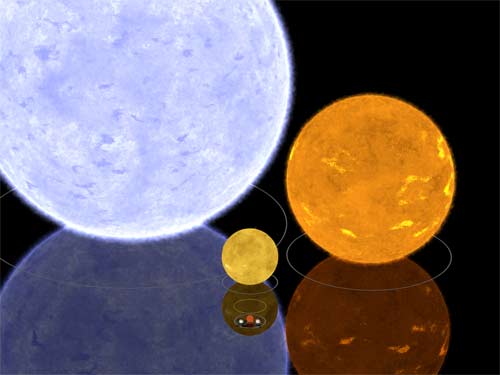blue giant

Blue giant Bellatrix compared to Algol B, the Sun, a red dwarf, and some planets.
A blue giant is a massive star of spectral type O or B belonging to luminosity class III. Blue giants have a luminosity typically about 10,000 times that of the Sun and a surface temperature of 20,000 kelvin (K) or more. The majority of them occur in OB associations. The high mass and internal temperatures of blue giants results in them having relatively short life-spans. Current theories suggest that most of them will end up as a supernovae.
The term "blue giant" is misleading, as most stars (for example, red giants) are in an advanced evolutionary stage in which helium, rather than hydrogen, is being fused in the core. Blue giants such as Bellatrix (B2III) are middle-aged massive stars in a transitionary period prior to becoming either a bright giant (and eventually a planetary nebula and massive white dwarf) or a supergiant (and eventually a supernova or rare oxygen-neon white dwarf). No star remains in the blue giant phase for long. The equivalent evolutionary stage for a solar mass star would be the subgiant stage (class IV), where hydrogen fusion is slowing and helium fusion is yet to begin.
Blue giants should not be confused with blue supergiants such as Rigel or ordinary hydrogen-fusing O to B stars such as Regulus.


